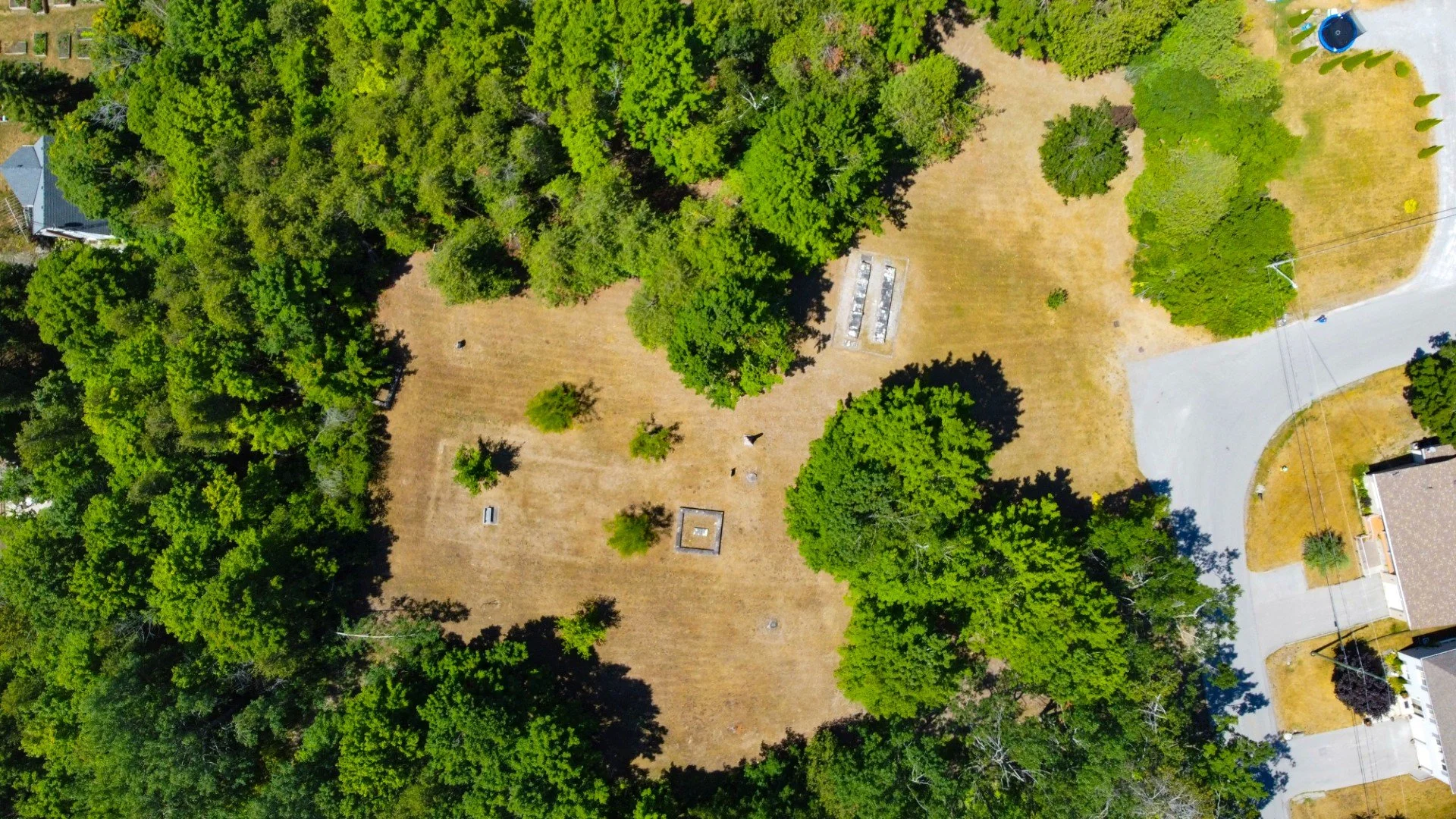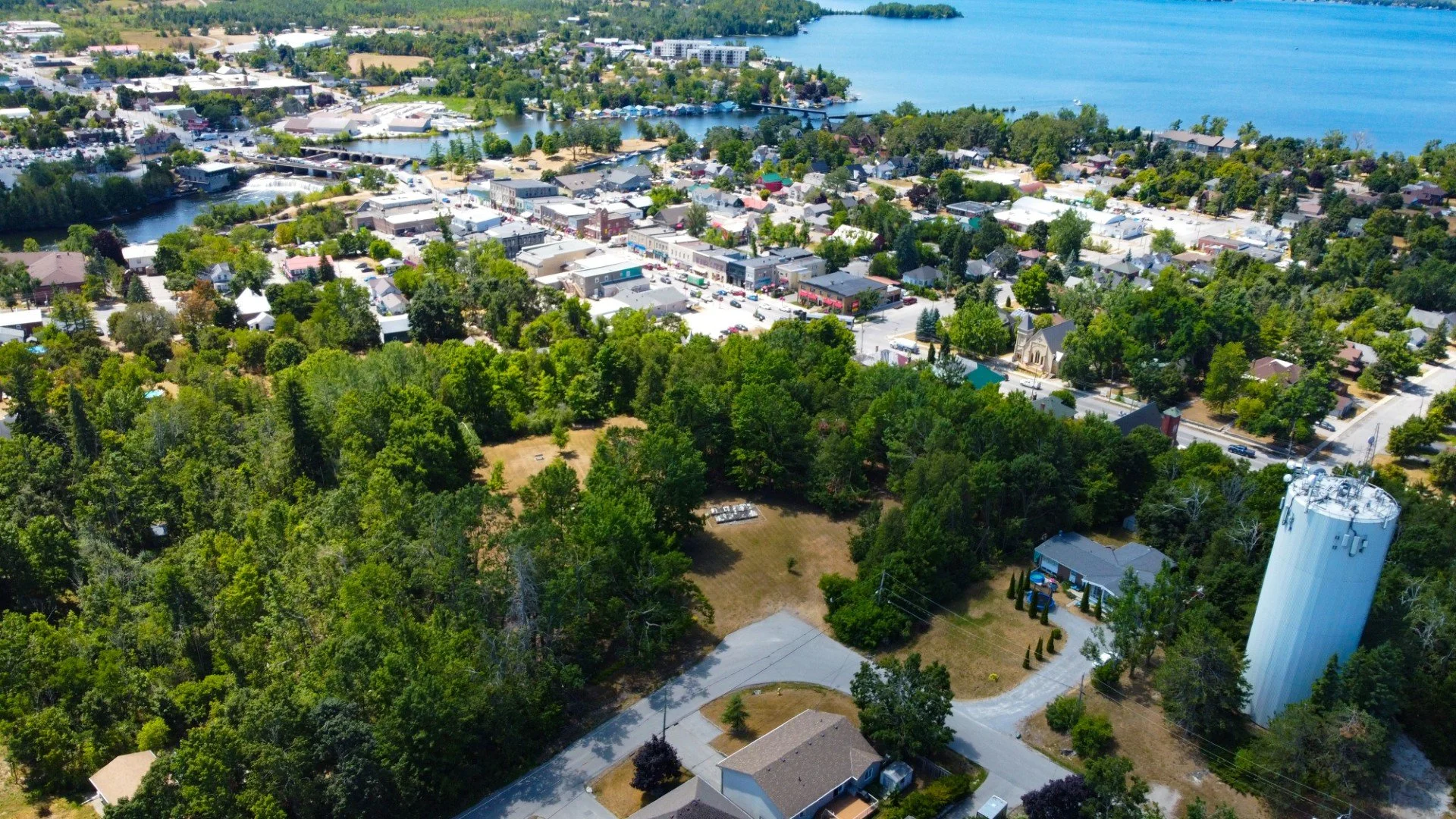Old St. James
St. James Anglican Church is among the oldest organizations in Fenelon Falls. Before the advent of public schools, many children received their education through the church. It helped care for sick and elderly—for most people, giving to church was their primary charitable donation. The Church of England (Anglican) had a close association with the Government of Upper Canada. Many of the most prominent colonial officials were Anglicans, notably, Bishop John Strachan. The same was true locally, as the most prominent gentlemen in Fenelon Falls were Anglicans.
Three aspiring young gentlemen, James Wallis, John Langton (Anne’s brother, later Canada’s First Auditor General), and Robert Dennistoun (later a Peterborough judge) were pivotal in establishing the Church of England at Fenelon Falls—fundraising, collecting subscriptions to support a minister and petitioning the governor for grants and a clergyman. Wallis personally conducted services until a permanent minister could be secured, and also donated lots for the chapel and parsonage (which was originally on the north side of Francis Street, near the lake). Since James Wallis and Robert Jameson owned the village, they could choose any site for the church. They selected the hill overlooking the village—so St. James Anglican Church was literally a light on the hill—a symbol that local parishioners would have understood. With the forests cleared off the church hill, it was one of the first buildings that visitors to Fenelon Falls would see.
Anne Langton's Sketch of the First Fenelon Falls Anglican Church, c 1839 (Archives of Ontario)
On May 6, 1838, Rev. C.T. Wade opened St. James Church, which was a small log chapel, built on the church hill, complete with a porch and belfry. Anne Langton recorded “the pews are left without doors, to obviate exclusiveness, but as some of them are paid for by individuals, there will be some appropriation of them, and this in so small a place is undesirable.” On April 24, 1839, the congregation held a bee to make a road up the hill to the church, and that same year, they welcomed their first permanent minister, Rev. Thomas Fidler. He volunteered to teach school, however, attendance was spotty at best.
Rev. Fidler served the community until May 15, 1847, when he tragically drowned. He was trying to cross the Fenelon River above the falls, along with two brothers who were assisting him, named Sinclair. Though the waters were high with the spring run off, they paddled across above the falls to a landing and grabbed some branches. But they wanted to land at a point further downstream, so they let go. Swept out into the current, facing the wrong direction, they tumbled over the mill dam and falls, all three perishing.
The first St. James Anglican church burned around 1850, and was replaced with a much larger frame building on the same site, which would serve the congregation until 1902. The location of the original village chapel had been symbolic, but in time it was not found to be the most practical choice. The church hill was quite steep, and it was difficult to access with horses and carriages, especially in winter. As the congregation outgrew this church at the turn of the century, the third St. James Anglican Church would be constructed at the bottom of the hill, closer to Colborne Street.
Once it was no longer used for Sunday service, the church on the hill continued to stand—and it remained one of the most prominent buildings in town. The trees had been cleared off the church hill. As the years passed the building fell into disrepair. In 1950, Ernest Hand purchased the old church and property hoping to save it from demolition. He repurposed it as a youth hostel for cyclists, walkers and hikers. Boarders would pay 50 cents to stay overnight—with a limit of three nights.
Into the mid twentieth century, St. James Anglican Church remained one of the most prominent buildings in town, though the forests on the side of the hill were regrowing. But it was also increasingly falling into disrepair. Early in the morning of July 22, 1967, the building caught fire and structure was subsequently demolished. The foundation remains alongside the pathway at Old St. James. In 1975, Fenelon Falls’ water tower was built further north on the church hill—and became a new community landmark. The old Church cemetery remains on site, which has become a quiet and peaceful greenspace.
Old St James from above
Old St James from the northeast





